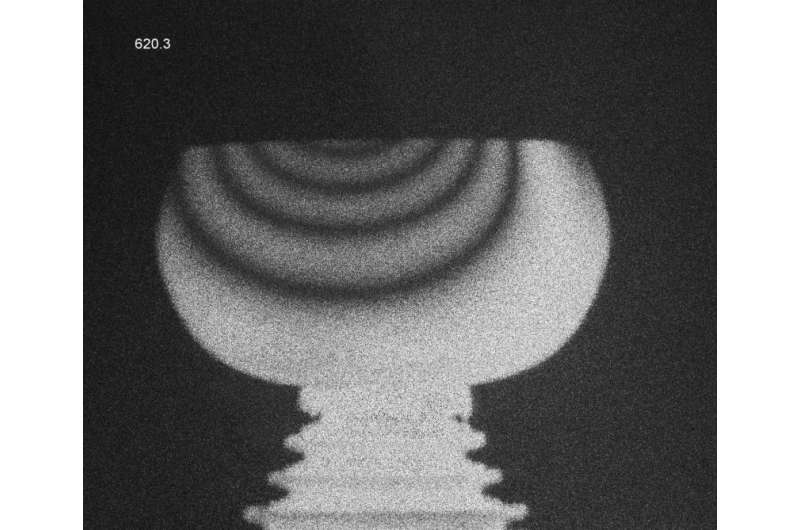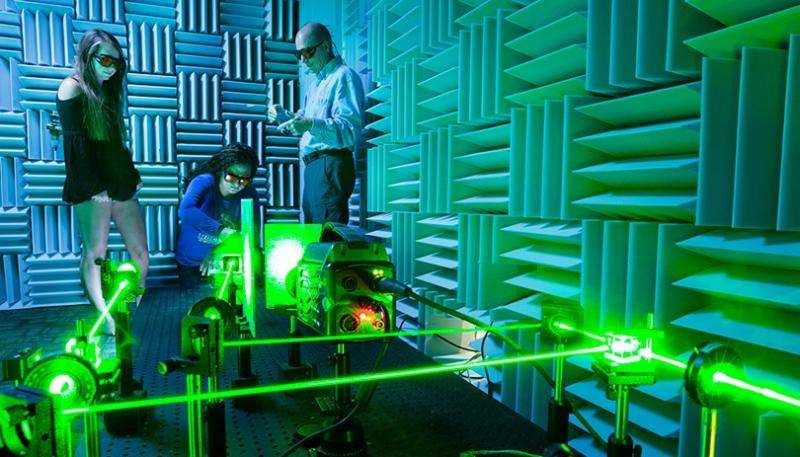Why's there chatter in my Himalayan singing bowl?

A Himalayan singing bowl operates much in the same way as a wine glass—slide your fingertip, or a wooden stick called a puja, around its rim to hear its soothing tones. The bowls, which originated in the Tibetan mountain region and are made of metal alloys, have been used for meditation and worship since around 500 BCE, but have found recently new audiences in contemporary music. While the complex stick-slip motions responsible for "chatter," or rapid knocking sounds, have been extensively studied in other instruments, few studies have investigated this action in the Himalayan singing bowl.
Recently, a group of undergraduate researchers from Rollins College, Florida has experimentally studied the motion of the Himalayan singing bowl and revealed the origin of "chatter," which occurs when the puja is played against the bowl. The study will be presented at the 170th Meeting of the Acoustical Society of America (ASA), being held Nov. 2-6, 2015 in Jacksonville, Fla.
"As the puja moves around the rim of the bowl, it switches very quickly between sticking to and slipping on the metal, which is called 'stick-slip motion,'" said Chloe L. Keefer, one of the researchers and an undergraduate at Rollins College, Florida. This motion is responsible for producing sounds in a wide variety of musical instruments, including the violin and cello, and many additional non-instrument vibrational processes.
Using a laser Doppler vibrometer, a scientific instrument for making non-contact measurements of the vibrations of a surface, Keefer's team measured vibrations at several points on the inner rim of the bowl near where the puja contacted the bowl.

"The puja's motion excites the vibration of the singing bowl, causing a unique deflection shape," Keefer explained. Their experiments showed that the puja forces a point of zero vibration called "a node" on the bowl, which lies in the vicinity of the contact point of the puja.
"The interesting part of the puja's motion is that people would expect the puja to lie on the node of the bowl's vibratory motion, but in fact it doesn't," Keefer said.
Rather, this node lies within two millimeters of the puja, she explained. As the puja rotates around the rim, the node follows behind it, and as the puja rotates faster and faster, the displacement or the vibration amplitude of the rim increases accordingly. When the amplitude of the vibration is large enough, it will briefly knock the puja off the bowl, producing chatter.
Earlier work by O. Inacio et al., had theoretically modeled the rim motion of the singing bowl as a ring and predicted that the radiating deflection shape of the bowl is dominated by the (2,0) mode that rotates around the bowl with the puja. Using high-speed electronic speckle pattern interferometry (HSESPI), a technique that can visualize the vibration of the bowl by taking pictures at a frame rate of 10,000 frames per second, Keefer's team experimentally verified the deflection shape does resemble the (2,0) mode and that the position of the node travels around the bowl following the puja.
In addition to instruments, the research that the team performed can also advance an understanding of brake squeal in automobiles.
The research group is affiliated with a program at Rollins College that involves undergraduate students performing original research on the physics of musical instruments under the supervision of a professor. The college also has ongoing studies on the motions of other musical instruments including piano strings, clarinet reeds and brass wind instruments.
More information: Presentation #4aMU7, "The Etiology of chatter in the Himalayan singing bowl," by Chloe Keefer and Thomas R. Moore will be take place on Thursday, November 5, 2015, at 11:20 AM in Grand Ballroom 2. The abstract can be found by searching for the presentation number here: https://asa2015fall.abstractcentral.com/planner.jsp
Provided by Acoustical Society of America


















